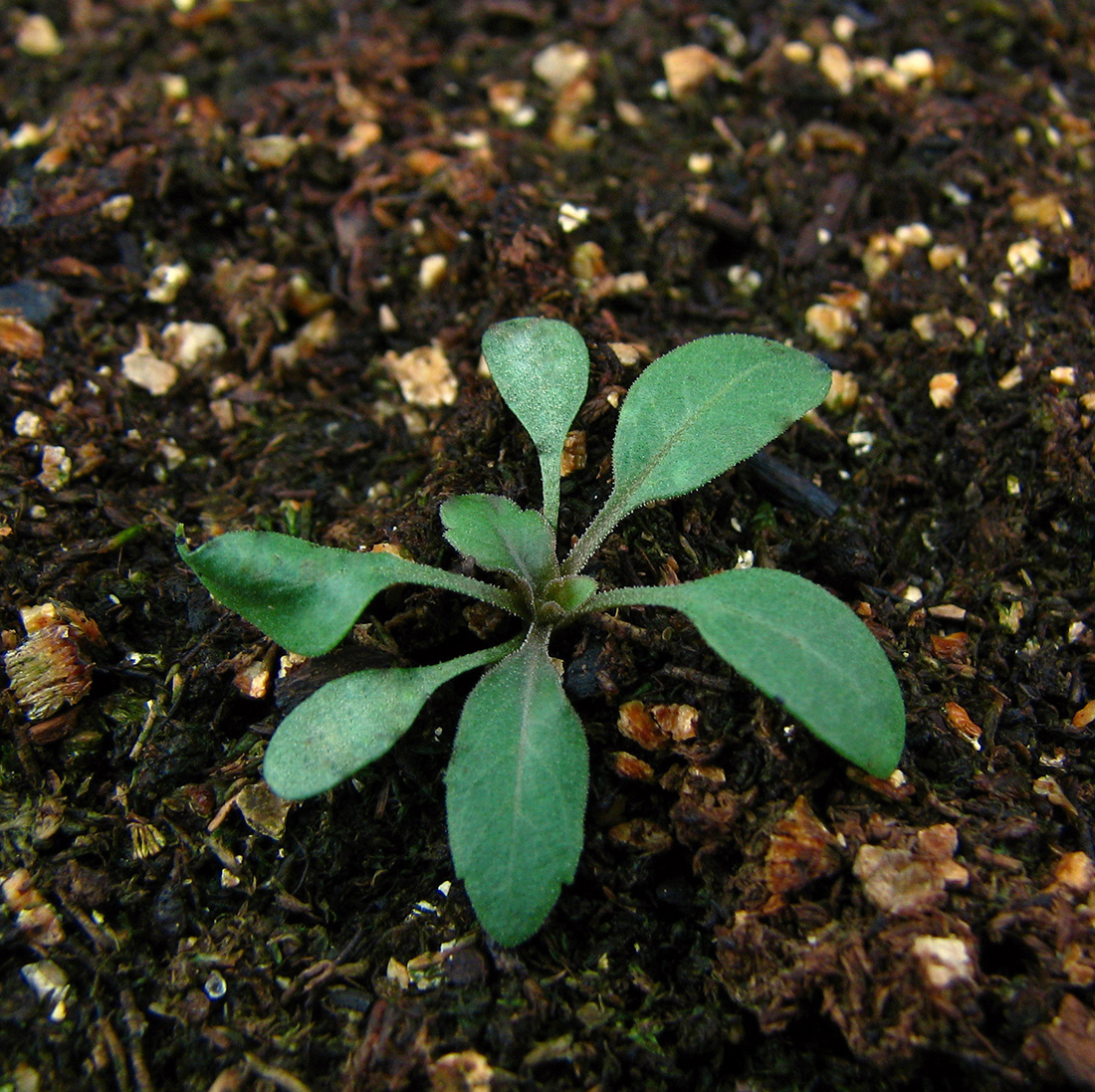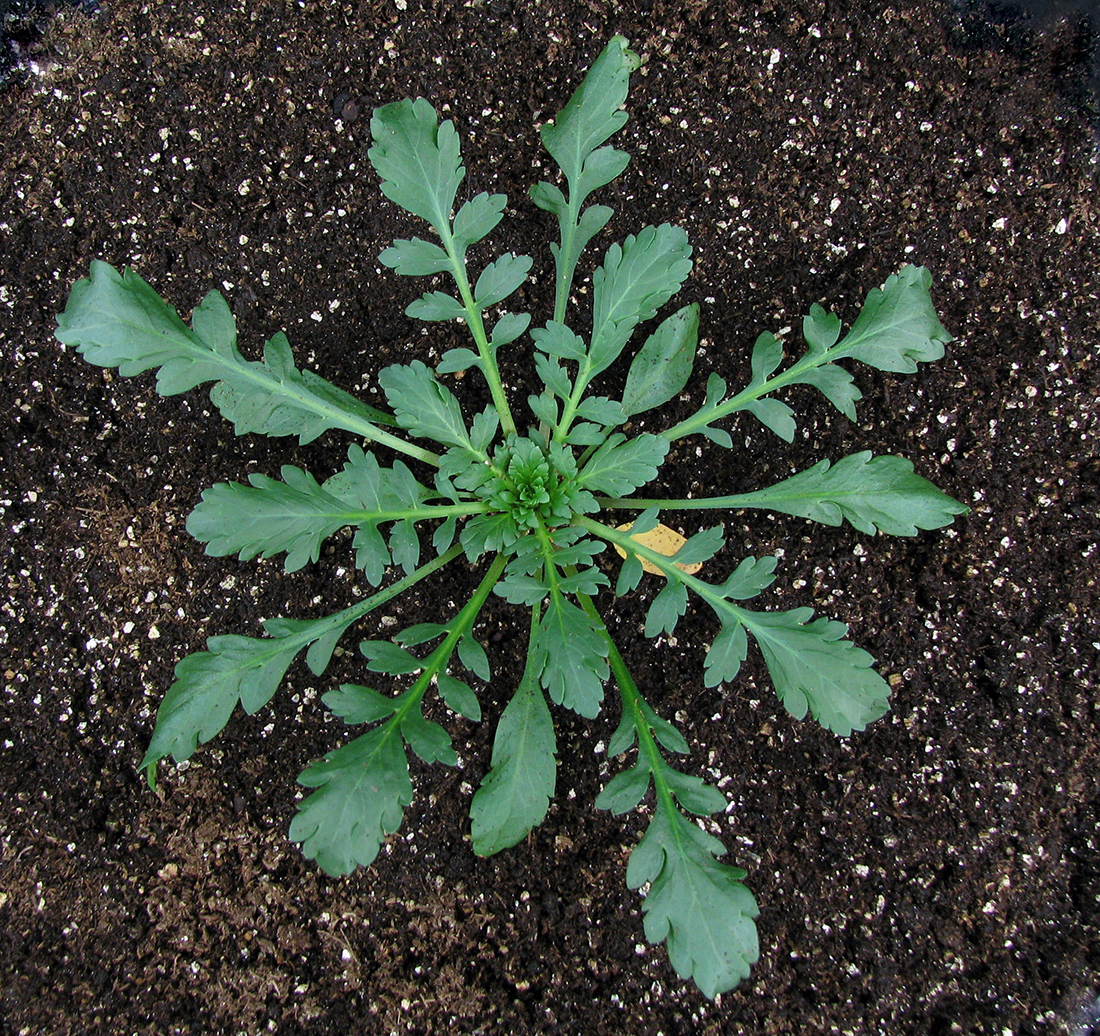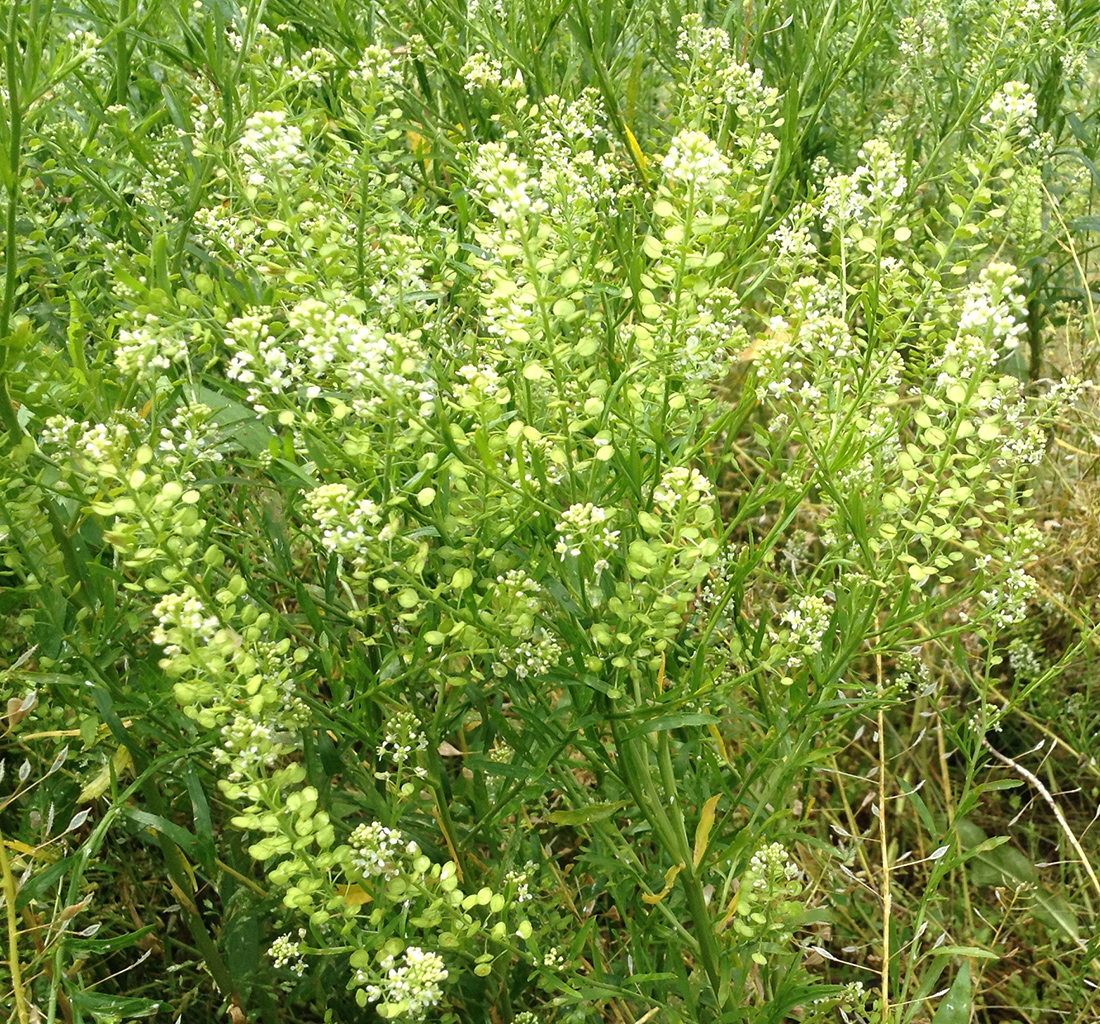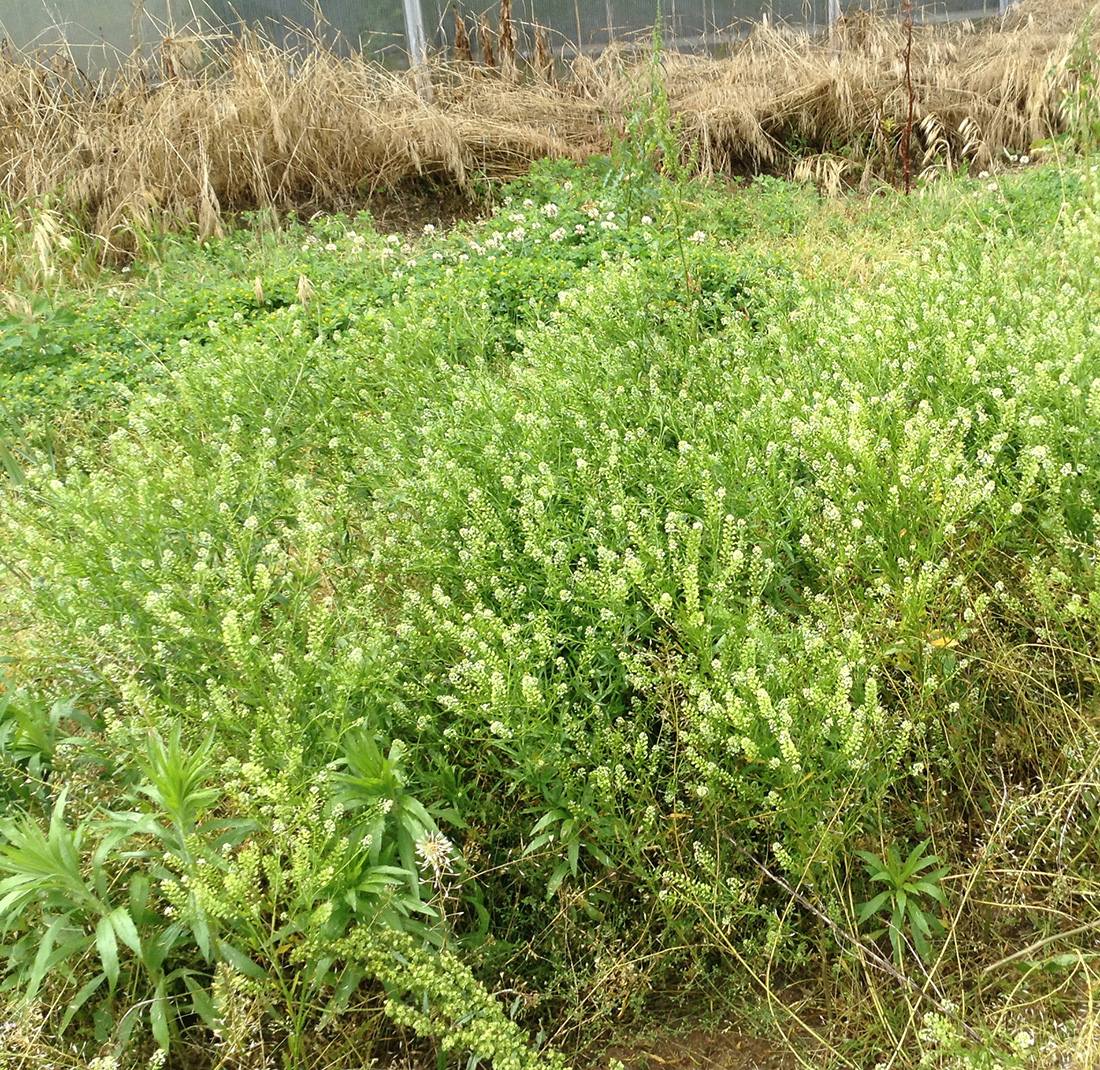Field Peppergrass
- Mustard (Brassicaceae family)
- Lepidium campestre (L.) W.T. Aiton
- EPPO code:
- LEPCA
- Other names:
- Field pepperweed, pepperweed
Species information
- Lifecycle:
- Annual or winter annual.
- Propagation:
- Reproduces by seed.
- Emergence:
- Typically, field peppergrass germinates and emerges in the fall or early part of spring.
- Habitat:
- Field peppergrass is predominately found in orchards, nurseries and waste areas in southern Ontario. It is rarely found in cultivated fields.
- Competitiveness:
- Little published data exists and results are varied. Swan (1971) indicated yield losses in winter wheat as high as 45%, while more recently a Swedish study evaluating peppergrass as an oil crop observed increased Barley yields when field peppergrass was under-seeded (Merker et al., 2010)
Identification clues
Seedling
- Cotyledons:
- Club-shaped to oval, with a long stalk, 12–15 mm long.
- Young leaves:
- The plant’s first leaves emerge as a basal rosette, oval with entire margins and on long petioles.
- Mature leaves:
- Rosette leaves become wavy-toothed to deeply-lobed margins. The stem leaves are alternate, arrow shaped and clasp the stem. Margins are entire to slightly toothed.
Mature plant
- Stem:
- The stem is erect, grows 10–60 cm tall and has short hairs. It is much branched near the top.
- Flowers:
- Field peppergrass produces clusters of small, white four-petal flowers.
- Fruit:
- Seedpods are numerous, flat and round. The top of the seedpod has a small notch; each contains two small, rust-coloured to brown seeds.
- Roots:
- Taproot.
Often mistaken for
I know it's not Stinkweed because stinkweed is hairless as compared to the rough-textured field peppergrass that is densely hairy. Field peppergrass does not produce an odour when plant tissue is crushed.




Updated: January 13, 2023
Published: January 13, 2023